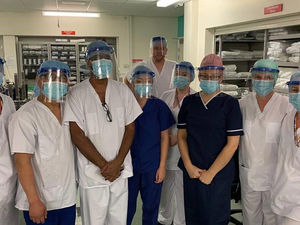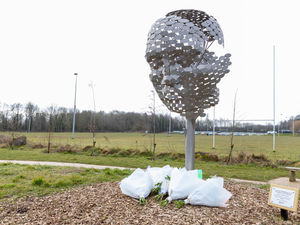Health bosses investigating rise in A&E walk-in patients
Shropshire's major hospitals have been faced with a rise in the number of patients walking into its A&Es – with under 16s counting for a 'substantial' part of the increase, health bosses have been told.

A total of 10,196 patients attended the A&Es at Royal Shrewsbury Hospital and Princess Royal Hospital in Telford during March.
In January, when the country went into the third national lockdown, 7,813 patients attended the county's emergency departments.
During an online meeting this week, Shropshire, Telford and Wrekin Clinical Commissioning Group's governing body was told the increase in walk-in attendances at both sites in March seems to be associated with schools reopening to all pupils towards the beginning of the month.
A substantial part of the increase is in the under-16s age groups, members were told.
Bosses, who are looking into the reasons behind the rise, say the increase was more noticeable at the emergency department in Telford.
Dr Julie Davies, director of performance, said: "We have seen an increase in walk-ins, particularly in paediatrics, since the schools had gone back.
"In terms of the underlying reasons for that, we are doing a preparatory piece of work."
She said the data would be discussed next week to look at what was driving the increase.
Variances
"Since we wrote that, across the board we've now seen an increase and it is back to pre-Covid levels, both in terms of minors/majors and coming in through via ambulance," Dr Davies added.
A report to the governing body said ambulance attendances had, by contrast, remained relatively stable.
It continued: "This would add support to a view that suggests there is a core level of ‘serious’ need which are delivered by ambulance and which has remained quite stable before and during the Covid pandemic, albeit with significant day to day variances.
"The variable factor in A&E activity would therefore appear to be the walk in activity at the less serious end of the severity spectrum.
"It is this section of demand which has shown most volatility and responsiveness to external events.
"Performance against the four hour standard has improved at both sites during March, particularly at PRH."
The report says it followed work being done by an emergency care support team to improve operational processes.
A policy urging patients to call NHS 111 first rather than walk in to Shropshire’s A&E departments, which was launched last year, is also continuing to show 'encouraging' results, the report says.
It added: "There remains no evidence that the process has increased propensity for the local population to call NHS 111, nor that more callers are being directed toward the emergency departments."





